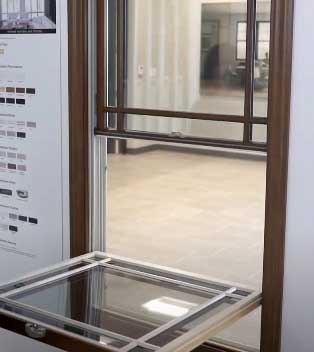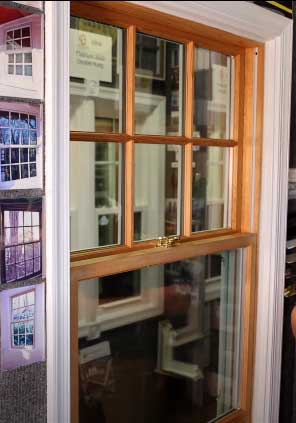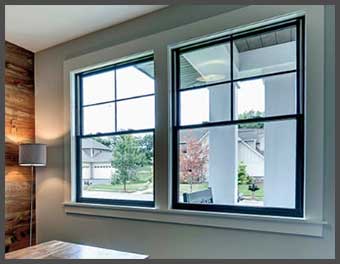Double-hung windows are a classic style that have been used in homes for decades. With their attractive divided light design and operational sashes, they offer both form and function. However, as with any window, double-hungs can develop problems over time.
If you have Pella double-hung windows in your home, you may encounter some common issues that can affect their performance and longevity. This comprehensive guide will outline the most prevalent Pella double-hung window problems homeowners face and provide troubleshooting tips to resolve them.
Pella Double-Hung Window Issues
- Balance System Failures

One of the distinguishing features of double-hung windows is the balance system that allows both the lower and upper sashes to stay in place when opened.
Pella uses a block and tackle system with a spring mechanism to counterbalance the weight of the window sash.
Over time, the spring can lose its tension or the ropes can fray and break.
This results in sagging sashes that won’t stay up when opened.
Signs of broken balance systems include:
- Window sashes that won’t stay up when opened or drift down over time.
- Ropes hanging down on one or both sides of the window.
- The window becoming difficult to open and close.
- Tilted or misaligned sashes.
If you encounter these issues, the balance system likely needs repair. Contact a window professional to inspect and replace any broken ropes, pulleys, and springs. Proper balance will need to be re-established for smooth operation. Catching problems early allows for easier repairs.
- Seal Failure Around Sashes
Double-hung windows rely on tight seals around the moveable sashes to prevent air infiltration. The sashes should close tightly within the side jambs and meet the top rail for a good seal. Over time, these seals can fail due to wear, allowing outside air and moisture to penetrate the window.
Signs of seal failure include:
- Drafts around the window sashes and glass when closed.
- Seeing daylight around the edges of the sashes.
- Accumulation of dirt around the edges of the sashes.
- Window rattling from excessive air flow.
- Higher energy bills from heat or cooled air escaping.
To fix seal failure issues, identify where the leaks are occurring. Check for gaps and daylight around the sides and top of the sashes when closed. Once you pinpoint the problem areas, apply weatherstripping or install new seals around the sashes to better seal them within the frame. High-quality weatherstripping should create an air tight barrier.
- Paint and Hardware Issues
Like any window, Pella double-hungs rely on high quality paints and hardware to maintain their visual appeal and performance. Issues like peeling paint, faded colors, and hardware malfunctions can develop over the years. Signs to look out for include:
Peeling Paint
- Bubbling, cracking, or flaking paint on the window sashes or frame.
- Visible bare wood under the paint.
- Paint fading to a chalky, oxidized appearance.
Corroded Hardware
- Stiff, hard to turn lifts and lock handles.
- Locks and lifts not catching properly.
- Visible rust on exposed hardware surfaces.
Loose Joints
- Rattles when operating the window or during windy conditions.
- Sashes shifting within the frame, leaving gaps.
- Lateral play or movement in the joints.
To remedy paint and hardware issues:
- Lightly sand and repaint any areas of peeling paint with high quality exterior paint.
- Replace any corroded lifts, locks, and hinges.
- Tighten any loose screws or hardware.
- Shim joints or frame areas that are loose and gaping.
Routine maintenance like painting and hardware replacement will keep double-hung windows looking and operating like new.
- Glass Seal Failure or Breakage

The insulating glass units in Pella windows create an air barrier and curb heat loss.
But the glass seal around the perimeter of the IGU can eventually fail, causing condensation or fogging between the panes.
Broken glass from impact or pressure can also compromise the integrity of the window.
Signs of glass failure include:
- Cloudiness, condensation or fogginess between window panes.
- Distorted views through the glass.
- Visible cracks, breaks or holes in the glass.
- Cold air flow through cracks in the glass.
Failed glass requires replacement as soon as possible. Contact a window professional to supply and install new IGUs with unbroken seals. Temporarily secure any cracked glass with sealant or tape until new glass arrives.
- Vinyl Frame Warping or Distortion
Pella double-hung windows mainly utilize vinyl frame material for its durability and low maintenance requirements. However, vinyl can still become warped, twisted or distorted over decades of use due to sun exposure, pressure points and extreme weather shifts. Signs of vinyl frame distortion:
- Vinyl bowing inward or outward on the frame or sashes.
- Misaligned or skewed sash operation.
- Gaps between sashes and frame that allow air infiltration.
- Sashes that stick and won’t open smoothly.
- Visibly wavy or distorted frame sections.
If the vinyl frame warping is excessive, window replacement may be required. For more moderate warping, removing the sashes and using straps or clamps to carefully re-straighten the frame may help extend the window’s lifespan.
But be careful not to apply too much pressure during this process which could damage the frame.
- Sash Alignment Problems
For optimum performance, the upper and lower sashes on double-hung windows need to align correctly within the frame channels. Misaligned sashes cannot operate smoothly and result in air and water infiltration.
Alignment problems usually stem from a distorted frame but can also be due to faulty installation or shifting over time. Signs include:
- Large gaps between the sashes and frame.
- Sashes rubbing against the frame during operation.
- One sash sitting higher or lower than the other when closed.
- Sashes tilting sideways within the frame.
- Difficult, grinding operation.
- Air and water leaks between sashes and frame.
Minor sash alignment issues can often be fixed by adjusting the sash balances to lift or drop one sash. But more severe cases usually require professional re-installation to correct the frame and sash alignment. Shimming or planing the frame may help in some situations.
- Fading or Discoloration of Vinyl
While vinyl offers durability, it can experience fading and discoloration issues over time when exposed to sunlight. Inferior vinyl quality or lack of UV inhibitors can accelerate problems like:
- Vinyl frame fading to a lighter color.
- Chalky, powdery vinyl surface.
- Yellow or brown discoloration.
- Inconsistent color throughout the frame.
These cosmetic issues don’t necessarily affect performance but can detract from the window’s appearance. If the double-hung frame shows signs of vinyl fading or discoloration, consider repainting or replacement. High quality paint formulated for vinyl can help restore appearance in some cases.
- Drafts and Air Leaks
A key advantage of new double-hung windows is their airtight design that prevents drafts and improves energy efficiency. But over time, air leaks can develop due to:
- Older frame and sash materials expanding and contracting.
- Loss of pliability in weatherstripping.
- Development of cracks and gaps in sealing points.
- Hardware and balance failures.
Signs of air leaks include:
- Feeling cold drafts near the windows.
- Window coverings moving around from air flow.
- Penetration of outside noise, dust and pollen.
- High energy bills from loss of heated or cooled air.
Finding the source of the leaks is the first step. Inspect around glass panes, weatherstripping, hardware joints, and where the sashes meet the frame. Apply new weatherstripping or clear caulk to seal identified gaps. Adjusting sash alignment, tightening hardware or replacing broken balance components may also help cut down on unwanted air exchange.
- Moisture Penetration Issues
Along with air infiltration, moisture penetration is a common problem with aging double-hung windows. Water leaking in around failing seals causes interior damage and allows for mold, mildew growth. Signs of moisture intrusion include:
- Wet spots or staining on interior walls and trims around the windows.
- Peeling interior paint near windows.
- Rotting, warped or swollen sills, jambs or sash materials.
- High indoor humidity levels near windows.
To remedy leaks, re-caulk any compromised sealant joints on the exterior. Spot seal where the sashes and frame meet with silicone or urethane caulk. Maintain effective flashing above and below the windows. Install exterior storm windows or sash replacements to improve weather protection.
- Hardware Corrosion
Exposed hardware like lifts, locks, and hinges are subject to corrosion issues if moisture or pollutants penetrate the window. Signs of corroding hardware include:

- Rust formations on handles, locks and lifts
- Stiff, hard-to-operate lift mechanics
- Locks freezing up or becoming non-functional
Before corrosion becomes too severe, clean hardware with vinegar, remove rust with emory paper or fine steel wool, and lubricate moving parts.
Replace components that are too far gone.
Using protective finishes like rust inhibitor sprays help protect hardware against future corrosion.
- Insect and Pest Infiltration
Infestations of bugs, ants, spiders or flying insects around windows can be a nuisance. Small crevices around aging seals and frames provide entry points for pests. Signs include:
- Visible insect activity around windows.
- Small piles of dirt or sawdust around frames from boring insects.
- Spider webs accumulating around widow hardware and gaps.
Pest exclusion involves sealing all possible entry points with caulk, weatherstripping, screening, or other barriers. Trim back vegetation or foliage touching the home around windows. Apply insecticidal dusts or treatments if needed to deter future access. Address any moisture issues that allow wood decay near windows.
- Condensation and Mold Growth
Excess interior moisture that penetrates window materials promotes mold, mildew and condensation issues. Signs include:
- Water droplets, fogging, or frost on frame and glass materials.
- Black, green or white mold spots on sills, jambs, and sashes.
- Peeling paint from moisture trapped underneath.
- Musty, dank odor around windows.
Improve ventilation and invest in a dehumidifier to control interior moisture levels. Clean mold with detergent, borax or vinegar solutions to kill spores and prevent regrowth. Replace any rotted sections that are providing a food source for mold.
- Wood Rot in Frame
While wood windows require more maintenance, Pella does offer some double-hung models with wood frames or sashes. Exposure to moisture over time can cause wood materials to warp, swell, and eventually rot away. Signs include:
- Visibly warped or decomposing wood frames and sashes.
- Spongy, crumbling wood when pressed.
- Peeling paint from moisture damage underneath.
- Accumulation of moisture, mold or frass from insects around wood sections.
Replacing any rotted wood sections is critical to prevent structural damage. Scrape off paint to inspect full extent of decayed areas and cut out. Epoxy consolidants can repair and harden deteriorated spots in some situations. Keep wood protected with paint or treatments to limit further rot issues.
- High Energy Costs
Drafty, inefficient windows lead to higher heating and cooling costs as conditioned air escapes. Signs your Pella windows may be causing energy loss include:
- Frequent cold drafts in winter and heat infiltration in summer.
- Rapid cooling of rooms on cold days or overheating on hot days.
- Noisy window operation indicating air leaks.
- Fogging, frost buildup or condensation issues indicating heat loss through the glazing.
- High energy bills despite proper insulation and thermostat settings elsewhere.
Improving seals around movable joints, adding storm windows, and replacing any failed glass units help cut energy costs. In severe cases, full window replacement provides the highest efficiency and savings.
- Difficulty Opening and Closing
Double-hung windows should operate smoothly through their full range of movement. Over time, issues like worn hardware, paint buildup, balance failures or frame warping can restrict operability. Signs of restricted operation include:
- Grinding, scraping noises when opening sashes.
- Only partial opening capability before sashes jam.
- Sashes drifting closed on their own or slamming shut.
- Need for excessive force to open sashes and move them up and down.
Try cleaning tracks, lubricating hardware and adjusting sash balances. Remove built up paint layers that may be obstructing movement. Inspect for any obstructions like swollen frame materials. Replace defective hardware components if needed.
- Fogging Glass Panes
Temperature differences across the separate panes of glass in an insulating glass unit can lead to fogging issues over time as seal failure occurs. Signs include:
- Cloudy, foggy appearance between the glass panes.
- Diminished visibility and light transmission through the glass.
- Accumulation of moisture and condensation internally between the glass panes.
Once fogging starts, the insulated glass seal has failed and the units will need replacement. Consult a professional to supply and install fresh insulating glass units with intact seals.
- Uneven Glass Surfaces
Imperfections in manufacturing or installation can result in subtle unevenness in the glass surface. This distortion alters exterior views and allows for easier accumulation of dirt and debris on the exterior glass. Signs include:
- Wavy appearance of objects seen through glass at certain angles.
- Pooling of rainwater and dirt on glass surfaces.
- Inability to get glass completely clean during washing.
Replacing compromised glazing components with new properly installed glass restores an evenly smooth exterior. Select high quality glass products and experienced installers to minimize uneven surfaces.
Frequently Asked Questions (FAQ)
The primary drawback with double hung windows is the potential for air leakage. With movable upper and lower sashes, seals around the sashes can fail over time allowing air infiltration. Operating ropes and hardware also create potential points of air leakage. Proper installation and regular seal maintenance are needed to minimize drafts.
If double hung window sashes won’t stay in place when open, the most likely culprit is a failed balance system. These windows rely on spring-loaded balances to counteract the weight of the sash and keep them upright when opened. Over time, these balances can wear out and break. Replacing worn ropes, pulleys, and springs restores the balance function and allows sashes to stay up when opened.
Compared to other brands, Pella windows are considered a high-end product known for quality and performance. Their windows feature robust engineering, durable materials like wood, vinyl and fiberglass, and advanced glass technology. While expensive initially, they require less lifetime maintenance and replacement versus cheaper brands. Overall, Pella windows are regarded as some of the best available.
If Pella double-hung windows become difficult to operate, it usually indicates an underlying issue. Potential causes include paint buildup obstructing movement, broken sash balances, misaligned or warped sashes, and wear on hardware components. Inspect for the specific cause, then remedy it accordingly – whether it’s scraping paint, replacing balances or hardware, realigning sashes, or refurbishing the frame. This will restore smooth operation.
Final Thoughts
Double-hung windows bring attractive styling and ventilation to homes, but they can develop common problems over time. Maintaining proper balances, sealing, hardware function, and frame integrity are key to ensuring Pella double-hungs operate smoothly for long-term use.
With regular upkeep and by addressing issues early before they worsen, homeowners can keep their windows in good working order.
Seeking professional repairs for any damages beyond minor fixes allows you to restore your Pella double-hungs to proper working order and continue enjoying their benefits. With some periodic troubleshooting and maintenance, these high-quality windows will serve your home well for decades.

why not offer steps to repair and get replacement parts at a 3rd party place like home depot or lowe’s